Everything to Know About November's Beaver Blood Moon

What do full moons and ballot boxes have in common? They'll both be active on Election Day this year!
If you're setting out early on Nov. 8 to cast your vote, be sure to cast your eyes to the sky as well because this month's full moon will take place just before sunrise on Tuesday morning.
Known as the Beaver Moon, November's natural satellite will produce quite the celestial spectacle. Not only will it be full, but it will be considered a blood moon due to its positioning in relation to the Earth and the sun.
Earth's shadow will cover the moon due to its perfect alignment between the sun and the moon, causing it to take on a reddish hue. This formation is called a total lunar eclipse, a rare phenomenon that isn't set to take place again until 2025!
Between why it's called the Beaver Moon and when you can spot it in the sky, here's everything to know about November's full moon this year.
RELATED: Everything to Know About the Full Moons in 2022
Why is November's full moon called the Beaver Moon?
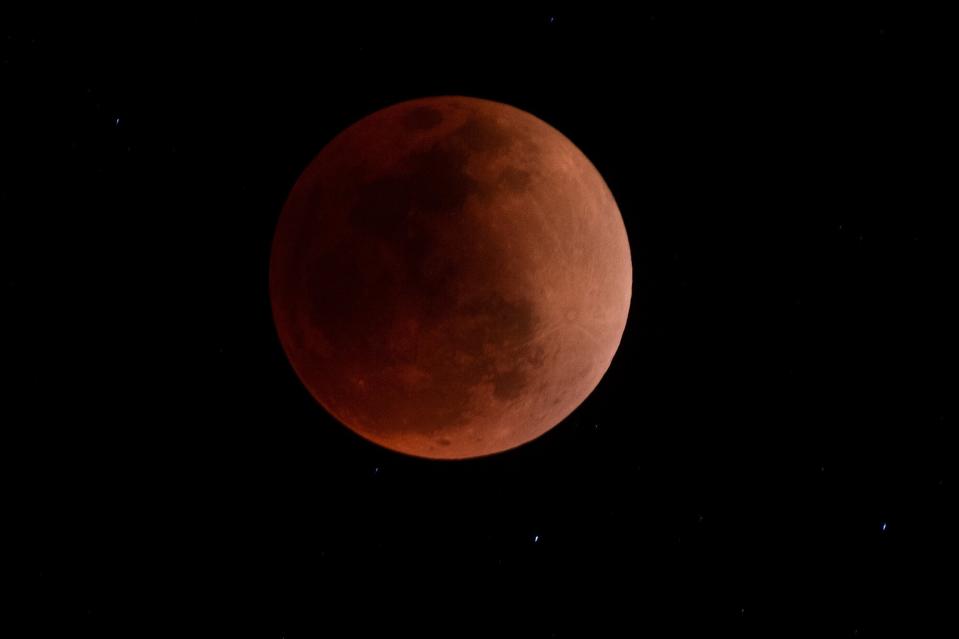
ERNESTO BENAVIDES/AFP via Getty
Historically, many of the nicknames we use for full Moons come "from Native American, Colonial American, or other traditional North American sources passed down through generations," according to The Old Farmer's Almanac.
November's full moon is widely known as the Beaver Moon. According to NASA, one interpretation stems from the idea that beaver traps were set up mid-autumn before the swamps froze to ensure warm furs were secured for the winter ahead.
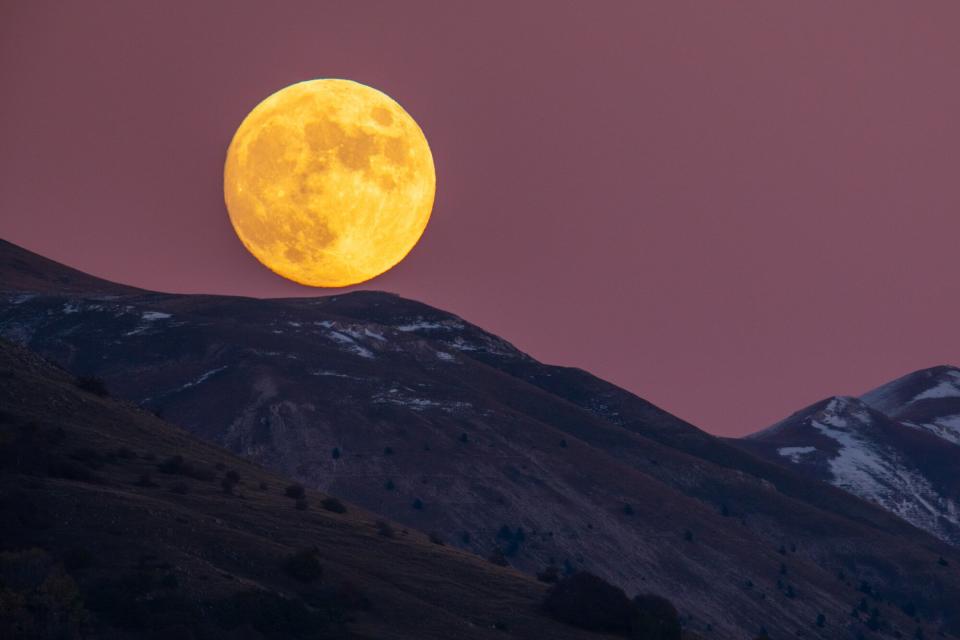
Lorenzo Di Cola/NurPhoto via Getty
In addition to the Beaver Moon, other names for November's full moon include the Frost or Frosty Moon and the Snow Moon due to the icy formations that often set in around this time of the season, particularly in North America.
RELATED: Breathtaking Photos of July's Buck Moon Captured From Around the World
What makes the Beaver Moon a blood moon?
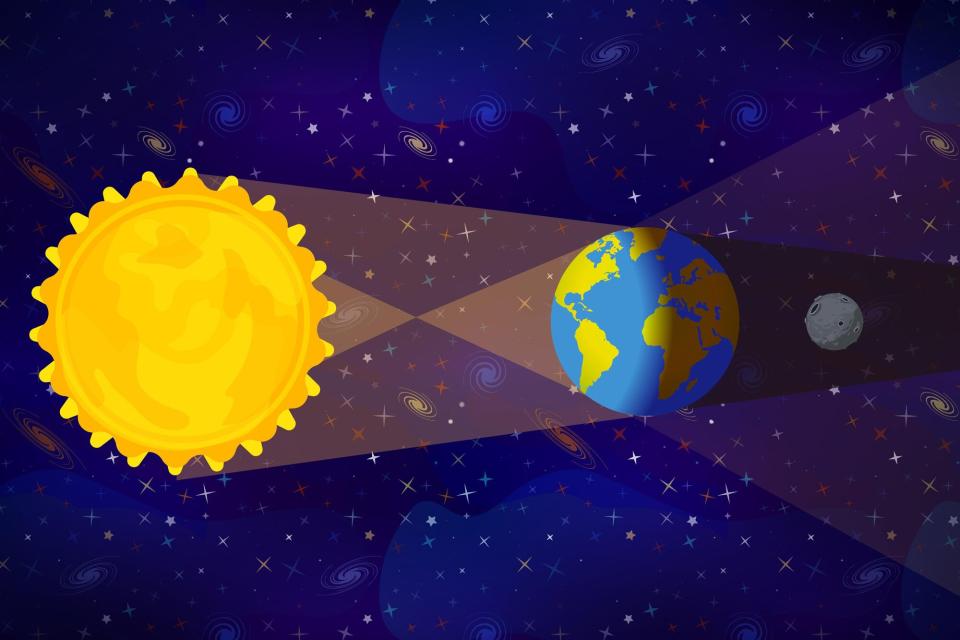
Evegeniy Bobrov/Alamy Stock Vector
The Beaver Moon will be considered a blood moon this year as a result of the total lunar eclipse that will be in effect. Since the Earth will fall in the middle of the sun and the moon, the planet's body will cast a shadow on the orb, giving it a reddish, coppery hue.
"To me, the most significant thing about a lunar eclipse is that it gives you a sense of three-dimensional geometry that you rarely get in space — one orb passing through the shadow of another," Bruce Betts, the chief scientist at the Planetary Society, told the New York Times.
RELATED: Carrie Underwood, Mike Fisher Spend Fun-Filled Day at Houston's NASA Space Center with Their 2 Sons
When to view the Beaver Moon?
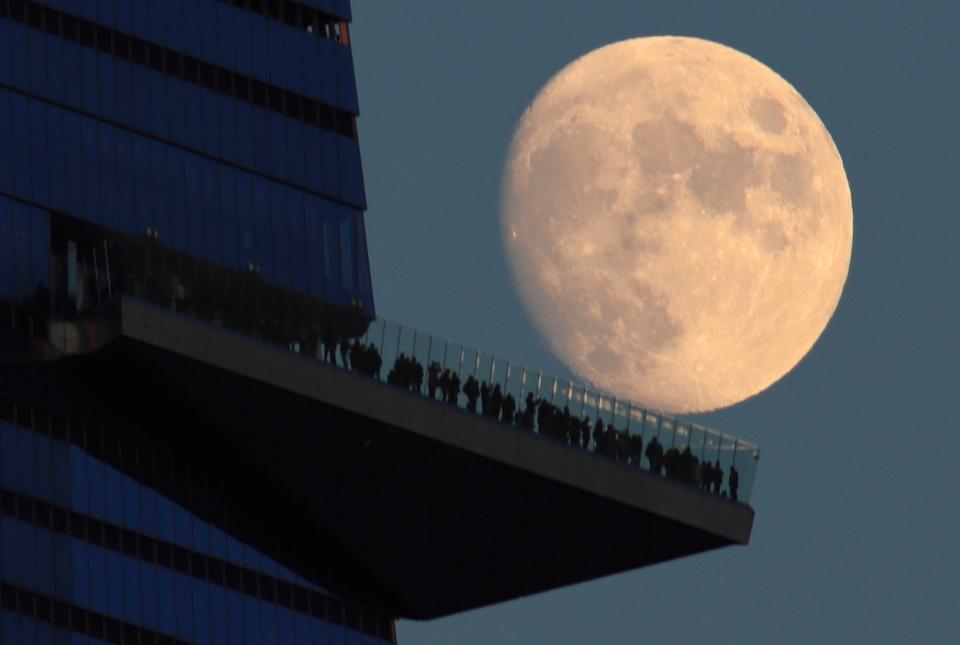
Gary Hershorn/Getty
The Beaver Moon reaches peak illumination on Nov. 8 at 6:02 a.m. ET, the same day as Election Day. But if you value your sleep and rather not set your alarm clock before sunrise, you can catch a glimpse of the full moon the night prior just after sunset.
One of the best parts about the lunar phenomenon? You can witness its beauty with the naked eye, so no telescopes or binoculars are needed. Avoid areas with light pollution, lie down on the ground and point your eyes to the sky for the best views.
Even better? If you situate yourself near the horizon, that's when the moon will appear its biggest and brightest! From 5:16 a.m. ET on, the moon will continue to set as the eclipse goes on — so be sure to catch it earlier rather than right before the sky becomes brighter as dawn arrives.
RELATED: Marine Pilot Set to Become First Native American Woman in Space: 'It Has Been a Long Journey'
When is the next full moon in 2022?
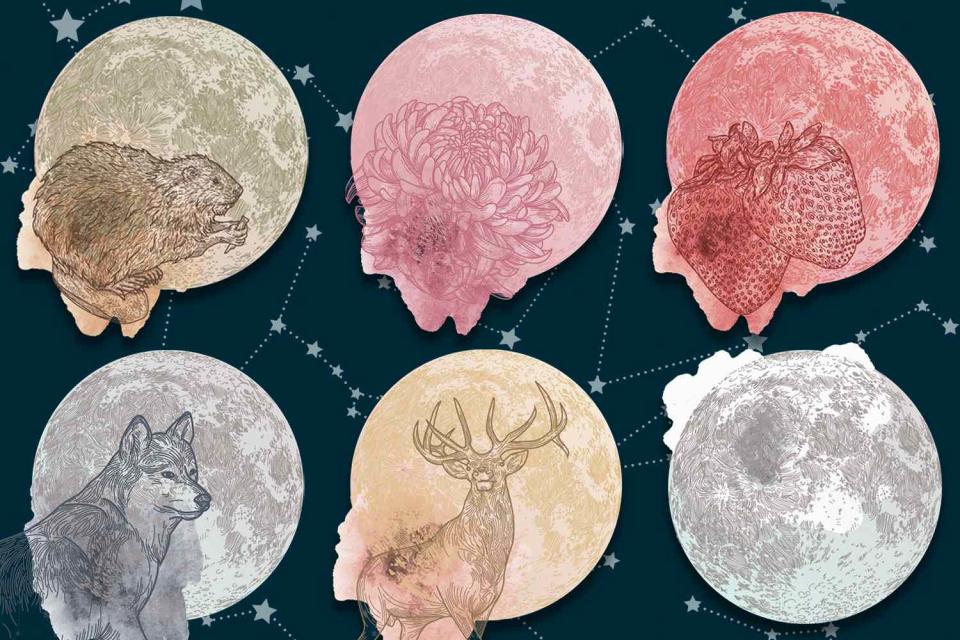
Getty
December's full moon is called the Cold Moon. It will reach peak illumination on Tuesday, Dec. 7, 2022.

